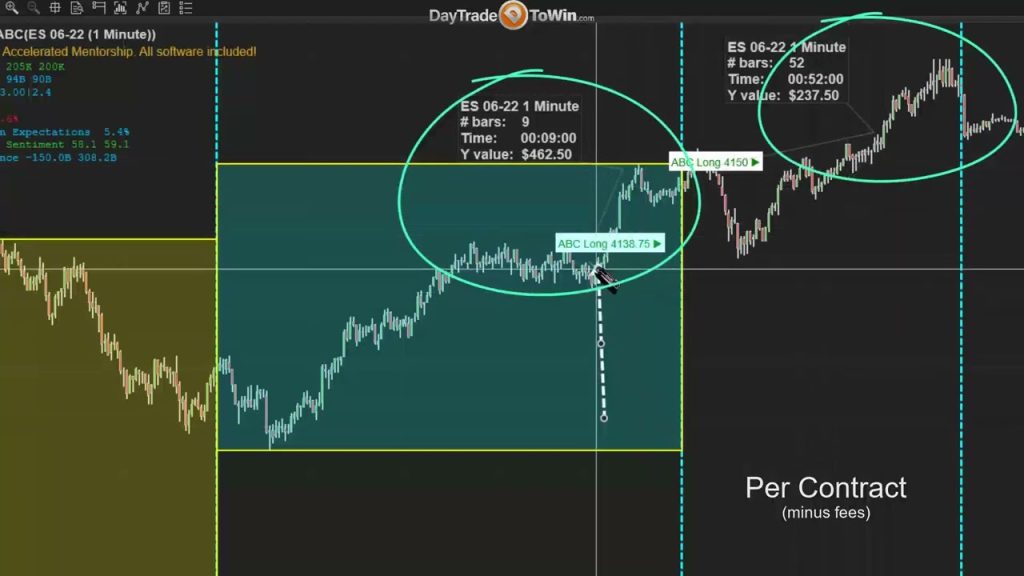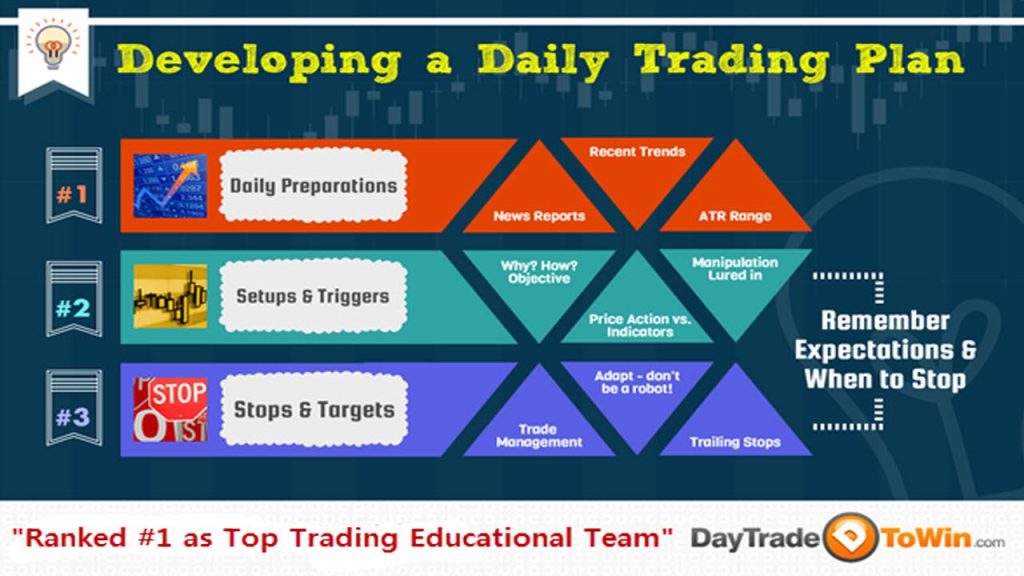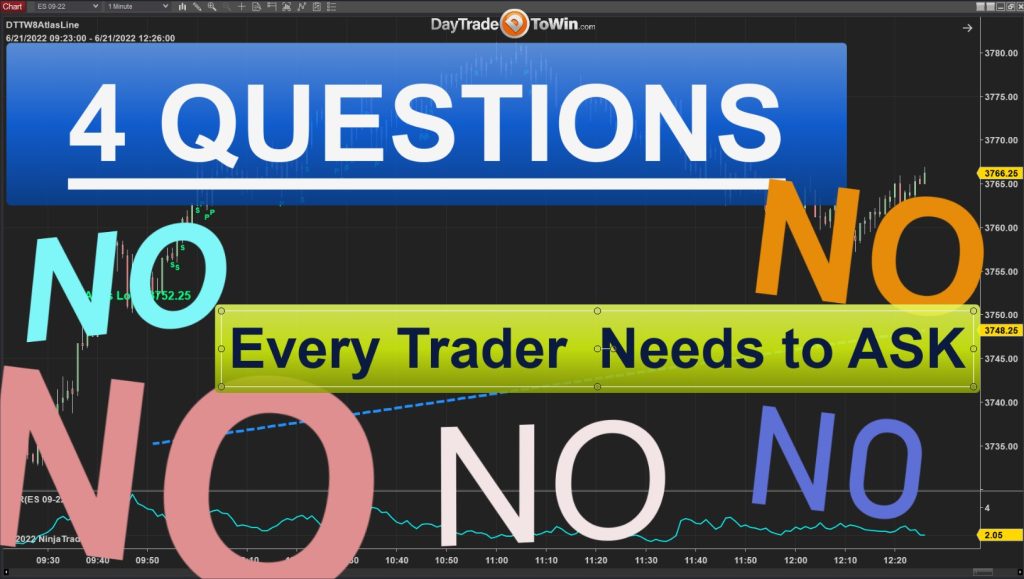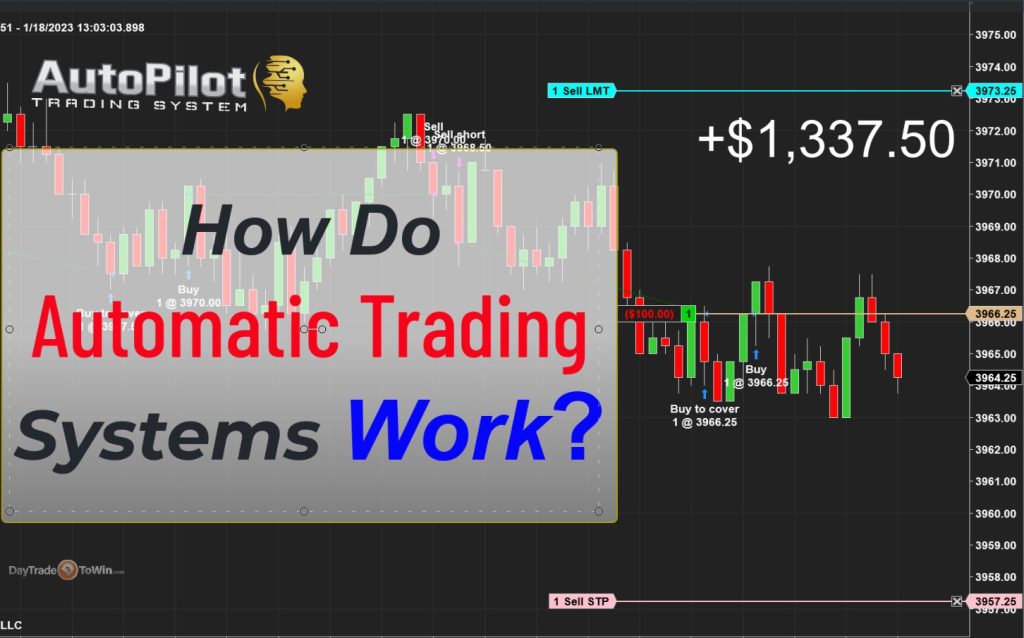Price Action Trading is a trading technique that uses price information from the past and present to determine future price movements. Traders who use Price Action are looking for patterns in price movements that can be used to identify potential trading opportunities.
Price Action Traders use price, chart patterns, and support/resistance levels to identify potential trades. They often look for trends in the price data that may indicate an entry or exit point. Price Action Trading is popular among forex traders because of its simplicity and low-risk level compared to other forms of trading.
It requires less analysis and fewer indicators, making it easier to implement than some other strategies.
Price Action Traders focus on understanding what the market tells them rather than relying on technical indicators or economic data, making it a great tool for traders looking for a simpler approach to trading.

Who Uses Price Action Trading?
Traders worldwide use price action trading. Price action forex trading is popular, as are futures and stock traders. i is a trading technique that uses price information from the past and present to determine future price movements.
Traders who use Price Action are looking for patterns in price movements that can be used to identify potential trading opportunities. You may even find price action trading groups to help you gain an edge.
Price action trading secrets are coveted by professionals. Most price action traders use price, chart patterns, and support/resistance levels to identify potential trades. They often look for trends in the price data that may indicate an entry or exit point.
Price Action Trading is popular among forex traders because of its simplicity and low-risk level compared to other forms of trading.
It requires less analysis and fewer indicators, making it easier to implement than some other strategies. Price Action Traders focus on understanding what the market tells them rather than relying on technical indicators or economic data, making it a great tool for traders looking for a simpler approach to trading.
How do you read price action?
Reading price action is a method of analysis used by traders to identify potential trading opportunities. Support and resistance is one of many ways to read the market. One way to think of it is having a sense of a market’s price movement. It involves analyzing the candlestick chart patterns which are formed on the price chart.

By studying these patterns, traders can gain insight into the sentiment of market participants and make informed decisions about when to enter and exit trades.
Price action analysis helps traders identify support and resistance levels, determine trend direction, spot reversals, and measure volatility. There are many advanced price action trading strategies to learn, but keeping it simple will always finish first.
Candlesticks provide an excellent visual representation of price movements over time which makes it easier for traders to read price action. Some common candlestick patterns include hammer, doji, engulfing pattern, harami cross and morning star.
By understanding price range using simple price action patterns, a trader can identify opportunities. A price action chart can help understand different price action strategies, especially when day trading. For example, the Trade Scalper price action scalping strategy uses not indicators to buy or sell, instead solely utilizing support, resistance, trading rules and sound foundations for scalping trading.
An introduction to price action trading is essential for new and experienced traders. Many price action techniques are derived from price movement itself.
Effective price action trading includes analysis of the “movement of the price,” how it functions, and the underlying cause and effect of the move.
.
A market’s price is an important aspect of learning price action trading A popular trading system could be breakouts, or reversals
Price could move up, or down, even sideways. The assumption is that the price creates a pathway to identity outcomes. By learning how to read price action candles, traders can improve their trading performance and increase their chances of success in the markets.

Price action vs indicators vs technical analysis: what is the difference?
Price action, indicators, and technical analysis are all used by traders to help analyze the market. Price action is the study of the price movements of an asset over time. It focuses on using candlestick charts and other charting tools to identify potential trading opportunities based on past price movements.
Particular price action Indicators, on the other hand, are mathematical calculations that are used to measure momentum and trend in the markets. They can be added to a chart to signal when a trader should enter or exit a trade.
The study of price compared to technical analysis is a method of analyzing historical price data in order to predict future price movements. This involves looking at patterns in historical market behavior as well as examining various types of indicators.
All three methods are useful for traders in their own way, but each one has its own strengths and weaknesses, which must be carefully considered before making any trading decisions. Many price action traders use both technical analysis and some type of price action strategy. Raw price action only takes into account price data.
What is a Price Action Indicator?
A Price Action Indicator or price action signal is a tool used by traders to analyze the movement of the financial market. The indicator uses the closing price, opening price, high and low prices to determine the current price level. It can also help traders anticipate future price movements.
Understanding price action trading doesn’t have to be complicated. Having a good mentor to help explain important aspects of price action is a first step. This information can then be used to create trading strategies or plan trades. Using price action setups involves using only the price of a market as an indicator of its future direction.
This means that traders can use price action analysis to understand better where prices are headed and develop their own strategies based on this information. Through the use of technical indicators and different price action Indicators, traders can make informed decisions about when to enter or exit a trade based on the current trend. By combining price action trading strategies with other forms of analysis, traders can increase their chances of success in any given market condition.
What Are Some Limitations of Using Price Action?

The analysis of price, also called price action is a trading strategy that uses the changing prices of an asset to make predictions about its future movement. While it can be a powerful tool for traders, there are some limitations to using price action.
One limitation is that it relies on past price history, so traders cannot anticipate external events or dramatic market movements. Because of this, price action may not be able to accurately predict the direction of markets in times of high volatility.
Additionally, because price action does not incorporate any indicators or technical analysis tools, traders must rely solely on their own interpretation and analysis of the chart to make decisions.
This means that it can be difficult for beginner traders to accurately interpret price action and make profitable trades. Therefore, while using price action has many benefits, it also has some limitations that need to be considered before making any trades.
Is price action trading profitable?
Price Action trading can be a highly profitable trading strategy for traders who know what they are doing. Price action trading easily wins over most traders’ views of market movement.
Traders focus on the price chart and base their trades entirely on price action rather than using indicators or other technical tools. Price Action Strategies involve watching the chart and being able to identify patterns in the price movement that can help you predict where prices may be headed.
As a Price Action trader, it is important to stay focused on price movements and be patient as you wait for your trades to play out. It takes patience and practice to become an experienced Price Action trader but with practice, you can develop your own trading strategies based on Price Action that can help you make consistent profits in the markets.
The Popularity of Price Action Trading
[embedyt] https://www.youtube.com/watch?v=Xfy89riaW4w[/embedyt]Price action reflects an increasingly popular segment amongst traders as a form of technical analysis. Price movements of an underlying stock, futures, or other instruments are what traders need to know about price.
There are plenty of blogs that focus on Price action trading, including FeedSpot’s 10 Best Price Action Blogs and Websites. involves looking at the recent price history of security in order to identify trade opportunities. By looking at the recent price and the price history, a trader can make decisions based on what they observe.
The benefit of price action trading is that it does not require any additional tools or indicators, making it extremely easy to use and understand. It also allows traders to quickly identify potential entry and exit points for their trades.
The popularity of price action trading is due to its simplicity and effectiveness when used correctly. With the right knowledge, traders can take advantage of the market’s movements and capitalize on potential profit opportunities with ease.
Price Action Trading Steps
Price Action Trading is a trading strategy adopted by traders to analyze and identify trade opportunities in the market. It involves the use of technical analysis to study past price movements of a particular asset or security. Traders who are skilled in price action trading use it to anticipate future prices and make informed decisions.
The first step for any trader using this approach is to identify the overall trend of the market. This is done by analyzing recent price movements, which can help traders determine whether it’s more likely that the trend will continue or reverse.
Once the overall trend has been identified, traders can then look for patterns in the chart that indicate potential trade opportunities, such as breakouts, reversals, and trends.
By studying these patterns, traders can gain insight into what direction the market may be headed in and take appropriate action accordingly.
Tools Used for Price Action Trading

Price Action Trading is a type of technical analysis used by traders to identify price movements and make decisions on when to enter or exit the market.
This system takes into account the high and low prices of a security, as well as its simple price bars, which are important aspects in price action trading. Taking the market’s price chart is a systematic approach to analyzing recent price movements in order to determine future trends.
It can be used to help traders make informed decisions based on past performance of the asset. Price Action Trading requires knowledge of technical analysis tools such as candlesticks, trend lines, support and resistance levels, and Fibonacci retracements in order to interpret current and past market behavior.
By looking at historical data, traders can develop strategies for predicting future price movements and take advantage of short-term opportunities for profit.
More chart patterns favored by price action traders
Markets using price action are plenty. Price action traders are those traders who make their trading decisions based on the price movements of a security rather than relying on indicators or technical analysis. These traders often look for certain chart patterns to help them identify potential trading opportunities.
Some of the most common patterns favored by price action traders include support and resistance levels, trend lines, breakouts, and candlestick patterns.
Support and resistance levels indicate potential areas where a security’s price may change direction, trend lines allow traders to spot trends in the market, and breakouts are used to determine when a security is likely to make a significant move. Candlestick formations can also provide insight into possible near-term market moves.
One point in the market is not the same as ticks or pips compared to other markets. Price action trading can be a useful tool for any trader as it allows them to focus solely on the movements of the underlying asset without being influenced by external factors.
Professional Trader, Author & Coach
A professional trader, author, and coach is a valuable asset to any trading organization. They can provide guidance and expertise to help traders reach their goals. A professional trader will be knowledgeable in various trading strategies, such as price action trading.
Price action trading involves analyzing the behavior of the market prices in order to gain insight into future movements. The trader will study patterns, trends and volatility levels in order to make educated decisions when entering or exiting a position.
Professional traders also have a deep understanding of risk management and money management, which can help them maximize profits while minimizing losses.
As an author and coach, they can provide valuable advice on technical analysis, risk management, money management, and psychology, which are all important components of successful trading.

Examples of some of my favorite price action trading strategies:
Price action trading is a systematic way of gathering information, creating a methodology, and acting upon the movement using rules along the way.
Price action trading is a type of trading strategy that involves analyzing the price movements of different financial instruments, such as stocks, commodities, and currencies. This strategy relies heavily on technical analysis to make informed decisions about when to buy and sell.
Some of my favorite price action trading strategies include candle stick patterns, breakouts and reversals, trend lines, support and resistance levels, and Fibonacci retracements.
Candlestick patterns are especially useful for identifying potential entries and exits in the market. Breakouts and reversals can help traders identify potential buy or sell points when prices are breaking through key levels. T
rend lines are used to identify trends in the market while support and resistance levels can be used to spot potential entry or exit points. Lastly,
Fibonacci retracements can be used to spot areas where prices may reverse after a large swing up or down. All these strategies help me stay on top of my trades and maximize profits from them.
Price action trading patterns
A Price action trading strategy includes patterns of price movements. Traders believe that price action trading is a methodology
Using ideas to make a popular strategy used by many traders. It focuses on the actual price movements of a given asset and seeks to identify patterns in order to make predictions about future price movements.
Price action trading relies on reading the market’s price breaks and understanding how prices move between high and low points.
Traders must be able to recognize different types of patterns, such as support and resistance levels, double tops and bottoms, head and shoulders patterns, wedges, flags, and pennants. By studying these patterns, traders can determine whether prices are likely to break out or reverse direction.
This type of analysis requires deep knowledge and experience of recognizing price action trading patterns in order to make successful trades.
Advanced price action strategies

Advanced price action strategies are used by traders to analyze and interpret the price movement of a security. Price action strategies look at what the price has moved in the past, and then use this information to predict future price movements.
These strategies can be used for any type of security, including stocks, commodities, and Forex. Advanced price action strategies involve looking at more than just one type of indicator or chart pattern to determine if a trader should open or close a position.
For example, some traders may use multiple time frames, chart patterns, and indicators to get an overall picture of where the price is going, while others might focus on one specific indicator or chart pattern.
In trading with the trend, advanced price action strategies can help determine when it’s best to enter and exit a position based on how much the price has moved in relation to its prevailing trend.
By analyzing these patterns closely, traders can gain an edge over other market participants who may not be aware of key support levels or trends.
Stop losses and profit targets for price action trading
Price action trading refers to the practice of using price movements and chart patterns to identify trades. A trader who uses price action is known as a price action trader. As part of their trading strategy, they will use price action techniques to determine entry points and exit points.
To help manage risk, they often set stop losses and profit targets. Stop losses are placed at predetermined levels below the entry point in order to limit losses if the market moves against them. Profit targets are also used to take profits when the market moves in favor of their position.
Setting these levels requires careful consideration by the trader as it can have a major impact on their overall return on investment. By combining these with other trading strategies, a price action trader can improve their chances of success in the markets.
Price action trading system
Price action trading is a trading system where traders look for trade opportunities based on past price behavior and not by relying on indicators or other analysis tools.
A price action trading system helps traders identify the best times to enter and exit a trade. It also provides better insight into the market, allowing traders to make more informed decisions in a shorter amount of time. By using a price action trading system, a trader can identify potential trade opportunities before they occur, taking advantage of them as soon as they arrive.
Price action trading also enables traders to assess the risk associated with each trade before entering it, giving them the ability to make informed decisions without taking unnecessary risks.
All in all, price action trading is an effective way for traders to increase their chances of success in the markets by understanding how prices move over time and using that knowledge to identify lucrative trade opportunities.
3 Popular Price Action Trading Charts

Price action trading is one of the most popular forms of trading in the markets. It is based on analyzing the price information of a security over a period of time.
The main idea behind it is to identify potential areas of support and resistance, as well as to identify potential price moves. Price action traders use three popular price action trading charts: closing price, opening price, and range high and low.
Closing price chart shows the closing prices for each day, while the opening price chart shows the opening prices for each day. Range high and low chart shows the highest and lowest points reached within a certain time frame by the security’s price movement.
The trader can then use this information to identify patterns in the market, determine entry and exit points, and make informed decisions on when to buy or sell a security.
Price bars are also used to represent data points on these charts, showing how far prices have moved within a certain period such as one day or one week.
By studying these charts, traders can gain insight into where prices are headed in order to make educated decisions about their trades at any given price level.
Price Action Analysis in Trading
Price Action Analysis in Trading is the study of how price has moved over a period of time. Traders use it to analyze high and low price levels, support and resistance levels, and other factors that affect the movement of price.
By reading the price action, traders can have an idea as to where the price may move in the future. Price action analysis is used by traders to make decisions on when to enter or exit a trade.
By being able to read the price action, traders can spot trends earlier and make more informed decisions on when to buy or sell.
Price Action Analysis also allows traders to better understand how their strategies are performing based on past price moves, allowing them to be able to adjust their strategy accordingly.
General tips for price action trading
Price action trading is a trading system based on price movement. It does not include any technical indicators but rather involves the trader studying the price action patterns of a security or forex pair and using these to make trading decisions. Experienced price action traders use the information to identify potential trade opportunities.
Price action traders should keep in mind that there are no set rules for making successful trading decisions and that each situation is different. They must also be aware of market conditions, as they can have an effect on the success of their trades.
All in all, price action trading can be a great way to gain profits when done properly. It requires discipline, patience, and experience to become a successful price action trader, and it will take time and effort to gain the necessary skills to become one.





Great post. It’s very well thought out and quite educating. Keep it up.